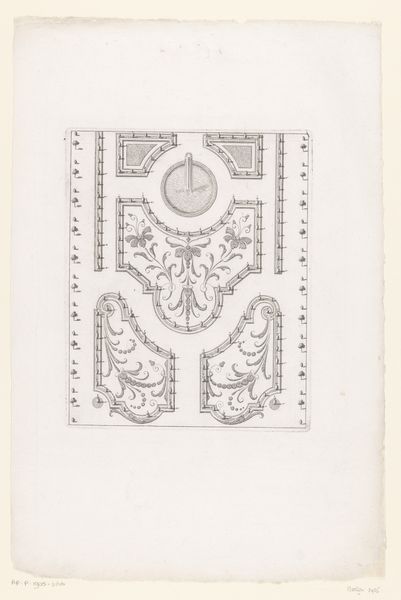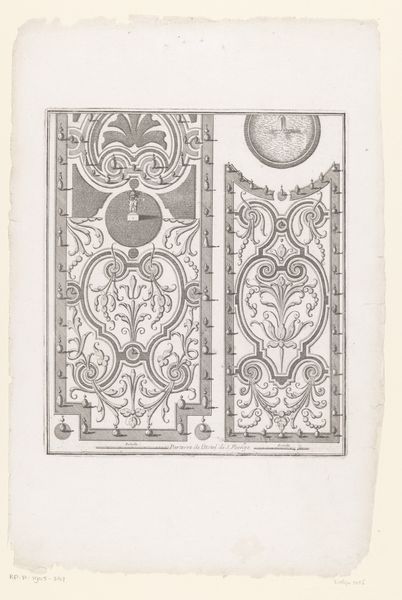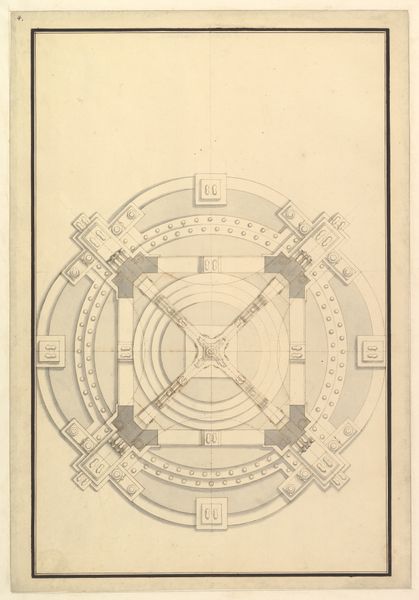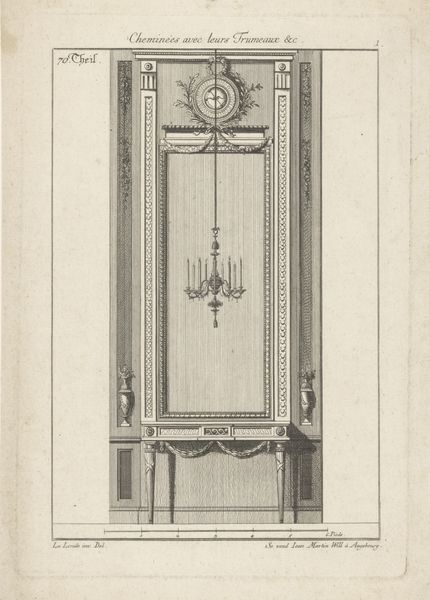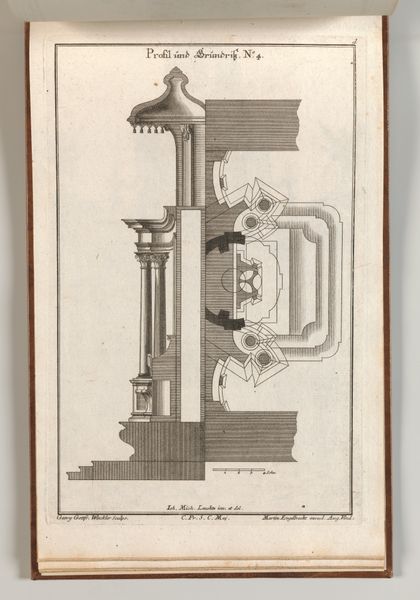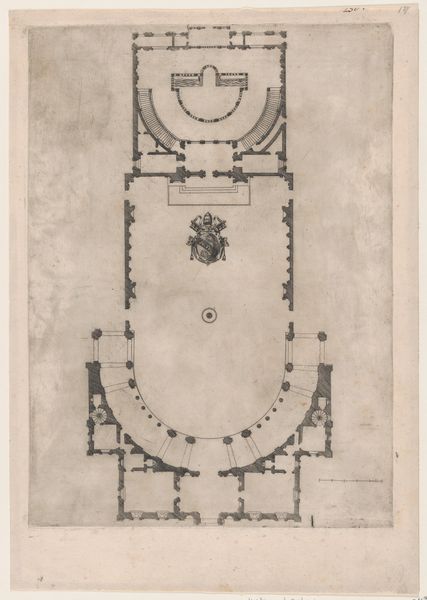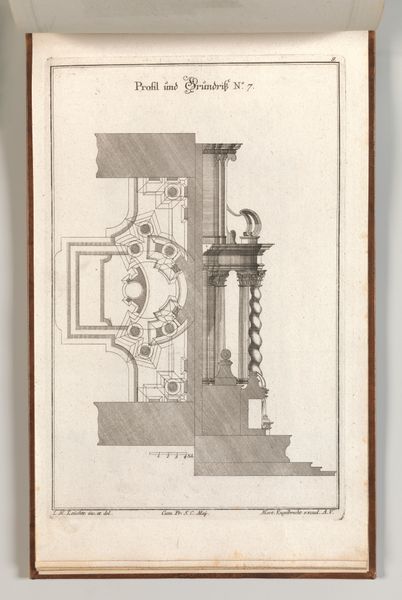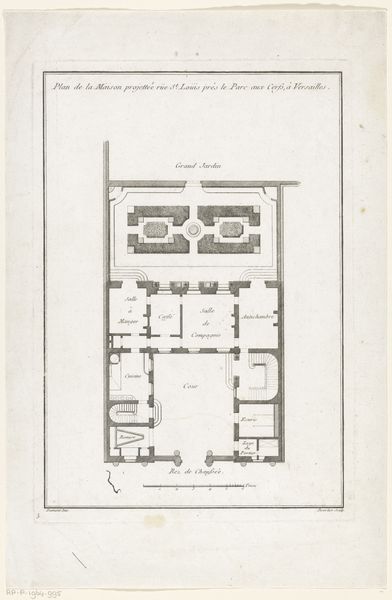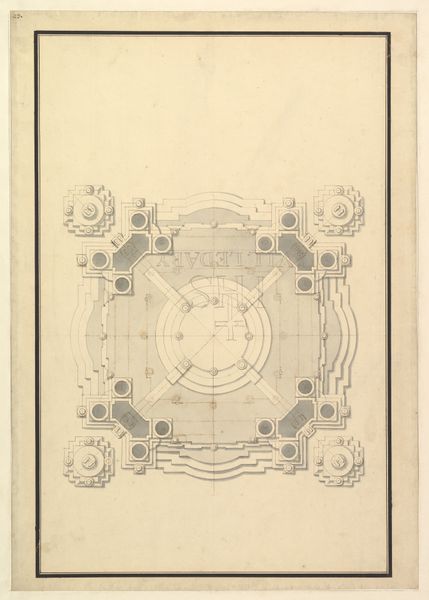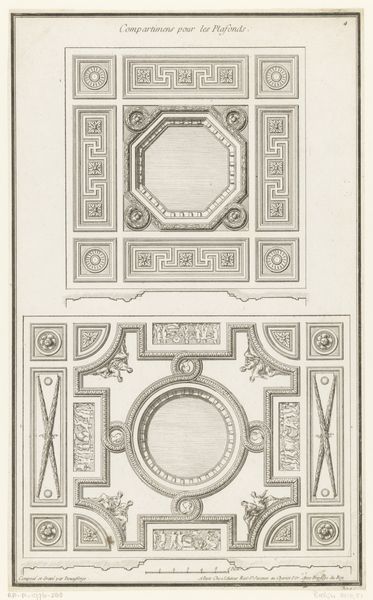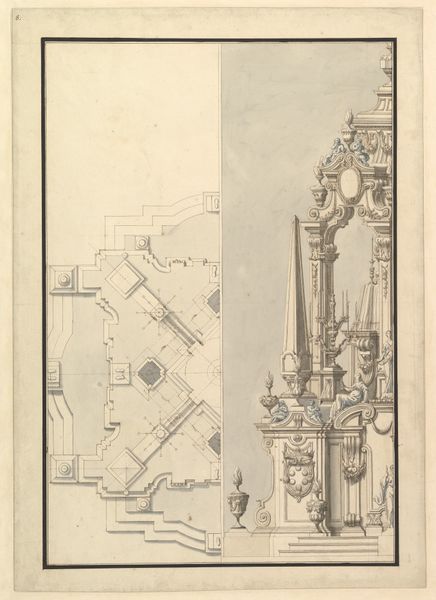
print, engraving, architecture
#
baroque
# print
#
landscape
#
geometric
#
line
#
engraving
#
architecture
Dimensions: height 378 mm, width 246 mm
Copyright: Rijks Museum: Open Domain
Curator: Allow me to introduce "Plattegrond van tuin met driehoekige parterres," a fascinating garden plan etched sometime between 1650 and 1700. It’s housed right here at the Rijksmuseum. Editor: It's captivating, isn’t it? At first glance, I find myself drawn to the stark precision of the lines, but they hardly evoke the organic essence of a garden. The overall structure appears rather...rigid. Curator: That's a keen observation. This engraving reflects the Baroque obsession with order, with its intricate, almost mathematical arrangement of geometric shapes and ornate plantings. Consider the power dynamics embedded in this carefully structured space; who held control and resources necessary to shape nature to such a highly conceptual design? Editor: Indeed, it screams societal power. These were gardens not for practical cultivation, but statements of prestige, influencing notions of taste and exclusivity. Yet, turning to the design itself, I am intrigued by how the engraver balances precision with visual flourishes. Take, for example, the contrast between the strict borders and the curlicue patterns that form within each parterre. Curator: A perfect intersection of structural rigor and artistic flair, indicative of period aesthetics! Furthermore, the repetition of triangular patterns across the grounds provides spatial coherence but might also speak of the limited options for rendering complex, curvilinear forms using linear techniques of printmaking, influencing stylistic choices. Editor: Perhaps so. And that central fountain... It is both focal and functional, representing technological prowess used for purely aesthetic displays. I’m also drawn to the tiny trees marching along the perimeter, acting as visual frame; almost like an audience framing a stage. Curator: Nicely put. This 'frame' directs the viewers focus in ways that reflect societal expectations and control the access to imagery. It is these compositional choices, repeated across cultural strata, that solidify aesthetic conventions within Baroque norms of the era. Editor: Thank you. Considering all aspects, I see the landscape beyond simple spatial arrangements, it becomes a codified social document, which speaks silently to history! Curator: Quite, its intrinsic value reveals narratives layered within seemingly simple lines and carefully balanced forms; so crucial to decoding its broader historical function.
Comments
No comments
Be the first to comment and join the conversation on the ultimate creative platform.
